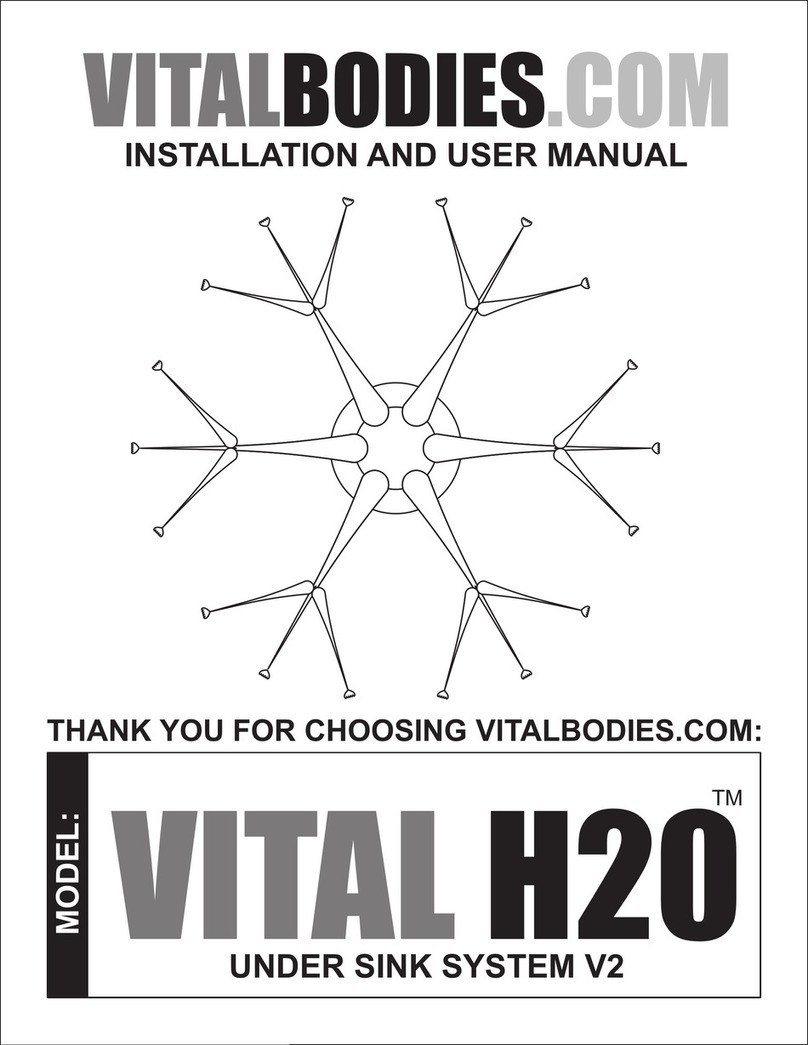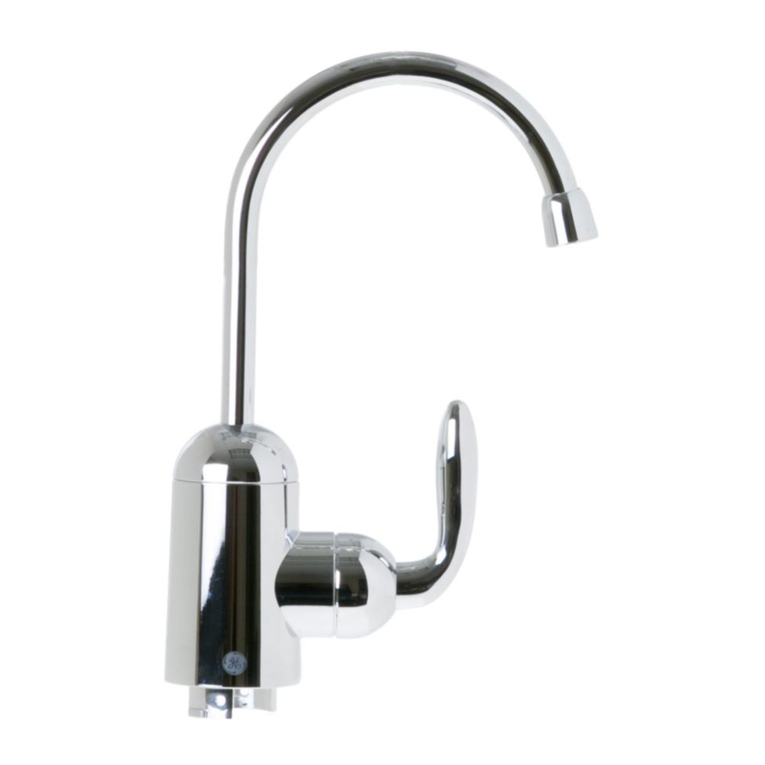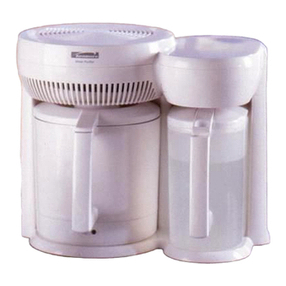STODDART SPWA.PCRO1 User manual

REVERSE OSMOSIS (RO) SYSTEM
SPWA.PCRO1
SPECIFICATION, INSTALLATION
AND OPERATION MANUAL
READ ALL INSTRUCTIONS BEFORE USE
Revision: A - 13/03/2023 - 02

Page Intentionally Left Blank
Page 1
Due to continuous product research and development,
the information contained herein is subject to change without notice.
www.stoddart.com.au
www.stoddart.co.nz

Page 2
Due to continuous product research and development,
the information contained herein is subject to change without notice.
www.stoddart.com.au
www.stoddart.co.nz
1.0 Introduction
1.1 Your New Stoddart Product . . . . . . . . . . . . . . . . . . . . . . . . . . . . . . . . . . . . . . . . . 3
1.2 Australia and New Zealand Warranty . . . . . . . . . . . . . . . . . . . . . . . . . . . . . . . . . . . . 4
1.2.1 Warranty Period
1.2.2 Warranty Registration
2.0 Specification
2.1 Product Overview. . . . . . . . . . . . . . . . . . . . . . . . . . . . . . . . . . . . . . . . . . . . . . 5
2.1.2 Components
2.1.2 Operating Specifications
3.0 Installation
3.1 Electrical Connection . . . . . . . . . . . . . . . . . . . . . . . . . . . . . . . . . . . . . . . . . . . . 6
3.2 Water Connection. . . . . . . . . . . . . . . . . . . . . . . . . . . . . . . . . . . . . . . . . . . . . . 7
3.3 Installation . . . . . . . . . . . . . . . . . . . . . . . . . . . . . . . . . . . . . . . . . . . . . . . . . 8
4.0 Maintenance
4.1 Filters . . . . . . . . . . . . . . . . . . . . . . . . . . . . . . . . . . . . . . . . . . . . . . . . . . . 9
4.1.1 Filter Life
4.1.2 Filter Replacement (for 1st, 2nd and 4th Stage)
4.1.3 RO Membrane Replacement
4.2 Troubleshooting . . . . . . . . . . . . . . . . . . . . . . . . . . . . . . . . . . . . . . . . . . . . . 11

Page 3
Due to continuous product research and development,
the information contained herein is subject to change without notice.
www.stoddart.com.au
www.stoddart.co.nz
1.0 Introduction
Carefully read this instruction booklet, as it contains important advice for safe installation, operation and maintenance. Keep this
booklet on hand in a safe place for future reference by other operators or users.
Stoddart design, manufacture & distribute Food Service Equipment (appliances) exclusively for the commercial market.
This appliance is not designed nor intended for household or domestic use and must not be used for this purpose.
This product is intended for commercial use, and in line with Australian electrical safety standards the following warnings are provided:
• This product is not intended for use by persons (including children) with reduced physical, sensory or mental capabilities, or lack of
experience and knowledge, unless they have been given supervision or instruction concerning the use of the product by a person
responsible for their safety. Children should be supervised to ensure that they do not play with the product
• If the supply cord is damaged, it must be replaced by the manufacturer, its service agent or similarly qualified persons in order to avoid
a hazard
The manufacturer/distributor cannot be held responsible or liable for any injuries or damages of any kind that occur to persons, units or
others, due to abuse and misuse of this unit in regards to installation, removal, operation, servicing or maintenance, or lack of conformity
with the instructions indicated in this documentation.
Disclaimer
All units made by the manufacturer/distributor are delivered assembled, where possible, and ready to install. Any installation, removal,
servicing, maintenance and access or removal of any parts, panels or safety barriers that is not permitted, does not comply in
accordance to this documentation, or not performed by a TRAINED AND AUTHORISED SPECIALIST will result in the
IMMEDIATE LOSS OF THE WARRANTY.
The manufacturer/distributor cannot be held responsible or liable for any unauthorised modifications or repairs. All modifications or
repairs must be approved by the manufacturer/distributor in writing before initiating. All modifications or repairs performed to this unit
must be performed at all times by a TRAINED AND AUTHORISED SPECIALIST.
Thank you for choosing this quality Stoddart product.
All Stoddart products are designed and manufactured to meet the needs of food service professionals. By caring for and maintaining this new
Stoddart product in accordance with these instructions, will provide many years of reliable service.
Stoddart is a wholly Australian owned company, which manufactures and/or distributes a comprehensive range of food service equipment for
kitchens, food preparation and presentation. Stoddart products are manufactured and engineered to provide excellent results whilst offering
value-for-money, ease-of-use and reliability.
1.1 Your New Stoddart Product
To register your new product, Follow the below Link/QR code.
www.stoddart.com.au/warranty-information
All Stoddart manufactured and distributed products are covered by Stoddart’s standard Australia and New Zealand Product Warranty (minimum
12 month on-site parts and labour, terms and conditions apply). Further to this standard warranty, certain products have access to an extended
warranty. Full terms, conditions and exclusions can be found using the below Link/QR code.
Warranty & Registration

Page 4
Due to continuous product research and development,
the information contained herein is subject to change without notice.
www.stoddart.com.au
www.stoddart.co.nz
1.0 Introduction
Carefully read this instruction booklet, as it contains important advice for safe installation, operation and maintenance. Keep this
booklet on hand in a safe place for future reference by other operators or users.
Stoddart design, manufacture & distribute Food Service Equipment (appliances) exclusively for the commercial market.
This appliance is not designed nor intended for household or domestic use and must not be used for this purpose.
This product is intended for commercial use, and in line with Australian electrical safety standards the following warnings are provided:
• This product is not intended for use by persons (including children) with reduced physical, sensory or mental capabilities, or lack of
experience and knowledge, unless they have been given supervision or instruction concerning the use of the product by a person
responsible for their safety. Children should be supervised to ensure that they do not play with the product
• If the supply cord is damaged, it must be replaced by the manufacturer, its service agent or similarly qualified persons in order to avoid
a hazard
The manufacturer/distributor cannot be held responsible or liable for any injuries or damages of any kind that occur to persons, units or
others, due to abuse and misuse of this unit in regards to installation, removal, operation, servicing or maintenance, or lack of conformity
with the instructions indicated in this documentation.
Disclaimer
All units made by the manufacturer/distributor are delivered assembled, where possible, and ready to install. Any installation, removal,
servicing, maintenance and access or removal of any parts, panels or safety barriers that is not permitted, does not comply in
accordance to this documentation, or not performed by a TRAINED AND AUTHORISED SPECIALIST will result in the
IMMEDIATE LOSS OF THE WARRANTY.
The manufacturer/distributor cannot be held responsible or liable for any unauthorised modifications or repairs. All modifications or
repairs must be approved by the manufacturer/distributor in writing before initiating. All modifications or repairs performed to this unit
must be performed at all times by a TRAINED AND AUTHORISED SPECIALIST.
Thank you for choosing this quality Stoddart product.
All Stoddart products are designed and manufactured to meet the needs of food service professionals. By caring for and maintaining this new
Stoddart product in accordance with these instructions, will provide many years of reliable service.
Stoddart is a wholly Australian owned company, which manufactures and/or distributes a comprehensive range of food service equipment for
kitchens, food preparation and presentation. Stoddart products are manufactured and engineered to provide excellent results whilst offering
value-for-money, ease-of-use and reliability.
To register your new product, Follow the below Link/QR code.
www.stoddart.com.au/warranty-information
All Stoddart manufactured and distributed products are covered by Stoddart’s standard Australia and New Zealand Product Warranty (minimum
12 month on-site parts and labour, terms and conditions apply). Further to this standard warranty, certain products have access to an extended
warranty. Full terms, conditions and exclusions can be found using the below Link/QR code.
Warranty & Registration
1.2.2 Warranty Registration
1.2.1 Warranty Period
1.2 Australia and New Zealand Warranty

Page 5
Due to continuous product research and development,
the information contained herein is subject to change without notice.
www.stoddart.com.au
www.stoddart.co.nz
2.0 Specification
2.1 Product Overview
2.1.2 Operating Specifications
2.1.2 Components
B
1
A
2
4
3C
D
E
F
G
H
IK
J
Model SPWA.PCRO1
W x D x H (mm) 380 x 220 x 445
Weight 20kg
Power 240VAC / 50-60Hz / 7A
10A plug & lead
Temperature 4-40°C (Cold Water Only)
Pressure 206 - 413 kPa
Total Dissolved Solids <800 ppm maximum
Maximum Hardness 250 ppm
RO Output 4540 LPD / 3.1 LPM
AMounting Bracket
BPressure Gauge
CPower Switch
DPower Socket
EBooster Pump
11st Stage: FG82 - 5 Micron High Capacity
22nd Stage: FG92 - 5 Micron Carbon Block
33rd Stage: 600GPD RO Membrane x 2
44th Stage : FG92 - 5 Micron Carbon Block
FFiltered Water Outlet
GDrain Outlet
HWater Inlet
IHigh Pressure Switch
JSelf Piercing Solenoid

Page 6
Due to continuous product research and development,
the information contained herein is subject to change without notice.
www.stoddart.com.au
www.stoddart.co.nz
3.0 Installation
3.1 Electrical Connection
This unit must be installed in accordance with AS/NZS 60335.1
Some procedures in this manual require the power to the equipment to be turned o and
isolated. Turn the power OFF at the power point and unplug the power supply lead by the plug
body. If the power point is not readily accessible turn the equipment o at the isolation switch
or the circuit breaker in the switchboard. Attach a yellow “CAUTION-DO NOT OPERATE” tag.
This must be performed where relevant unless the procedures specify otherwise.
FAILURE TO DO SO MAY RESULT IN ELECTRIC SHOCK.
WARNING
Single Phase Units:
• Supplied and fitted with an appropriately rated plug and lead, indicated as:
- 10amp transformer with lead and plug
Notes:
• If the supply cord is damaged, it must be replaced by the manufacturer, its service agent or similarly qualified persons in order to avoid a
hazard. Please contact Stoddart for parts and we will advise how to do this in order to avoid any electrical hazard
• The power cable should be dry and/or isolated from moisture or water

Page 7
Due to continuous product research and development,
the information contained herein is subject to change without notice.
www.stoddart.com.au
www.stoddart.co.nz
3.0 Installation
OVEN
WASH
SYSTEM
OVEN
STEAM
GENERATION
COLD WATER CONNECTION
WITH ISOLATION VALVE
(EXISTING CONNECTION)
DRAIN
COMBI
WATER SUPPLY
K
K
M
J
E
L
I
E
C C
C
A
B
D
G
F
H
N
J
Note: After connections are complete, close the 3/8 three way manifold “L” to the combi and flush the system for 5
minutes. After 5 minutes open the 3/8 three way manifold “L”.
3.2 Water Connection
IMPORTANT
This unit must be installed in accordance with AS/NZS 3500.1
The unit must be installed with the supplied Water Filters and
Pressure Limiting Valve
The RO unit is to be installed using the supplied fittings and combi oven plumbing kit.
Item Description Supplied
with Oven
Supplied
with RO Kit Total Qty.
ADual Check Valve 1 --- 1
BFour Way Manifold 1 --- 1
C3/4” Bsp To 3/8” Tube Connector --- 3 3
D1/2” Bsp To 3/8” Tube Connector --- 1 1
E3/8” John Guest Stem Elbow --- 2 2
FPressure Limiting Valve 300-350 Kpa --- 1 1
GPressure Limiting Valve 350-600 Kpa --- 1 1
HNipple, 3/4” Male 1 --- 1
IBlue 3/8 Tube ‘Filtered Water’ (to be cut to length) --- 1 1
JWhite 3/8 Tube ‘Unfiltered Water’ (to be cut to length) --- 1 1
KRed 1/4 Tube ‘Drain’ (to be cut to length) --- 1 1
L3/8” John Guest Three Way Manifold (For filter flushing) --- 1 1
MJohn Guest Locking Clip --- 12 12
MSpare outlet (Hand Shower) --- --- ---

Page 8
Due to continuous product research and development,
the information contained herein is subject to change without notice.
www.stoddart.com.au
www.stoddart.co.nz
3.0 Installation
3.3 Installation
1. Connect the dual check valve to the cold water supply
2. Attach four way manifold and two connectors to the dual check valve
3. Connect the two PLV’s to the connectors on manifold
4. Connect to the oven wash system with 3/8 white tube, John guest elbow and connector
5. Attach 3/8 white tube to the PLV and connect to the water supply connection on the RO
6. Attach 3/8 blue tube to the COMBI connection on the RO. Attach the three way manifold to the tube then run tube to the oven steam
generation connection using a John guest elbow and connector
7. Connect the 1/4 red tube to the DRAIN connection on the RO and run to the tundish. Connect 3/8 blue tube to the third connection on
the three way manifold and run to the tundish (this is used as the flush hose
8. Close the three way manifold “L” to the combi and flush the system for 5 minutes. After 5 minutes open the manifold
OVEN
STEAM
GENERATION
DRAIN
COMBI
WATER SUPPLY
OVEN
WASH
SYSTEM
1
5 6
7 8
2 3 4
K
I
I
I
J
J
J
J
E
E
L
C
C
C
A
B
D
G
F
H

Page 9
Due to continuous product research and development,
the information contained herein is subject to change without notice.
www.stoddart.com.au
www.stoddart.co.nz
Note: After changing a filter, close the 3/8 three way manifold “L” to the combi and flush the system for 5 minutes. After 5 minutes open the
3/8 three way manifold “L”.
1. Isolate from power supply
2. Unplug
3. Turn off water supply to the RO
4. Close the 3/8 three way manifold “L” to the combi
5. Unscrew the filter to be replaced
6. Replace with new filter
7. Screw new filter into position
2 3 4
1
OFF
57
6
LOOSEN TIGHTEN
4.1.2 Filter Replacement (for 1st, 2nd and 5th Stage)
4.0 Maintenance
4.1 Filters
4.1.1 Filter Life
Note: The life of the cartridges depend on the water volume used and the substances in the water. The following is a general guide.
Part No. Filter Stage Description Replacement
SPWA.PFG82 1st Stage FG82 - 5 Micron High Capacity 6 - 12 Months / 12,000 L
SPWA.PFG92 2nd Stage FG92 - 5 Micron Carbon Block 6 - 12 Months / 12,000 L
SPWA.PFRO 3rd Stage 600GPD RO Membrane x 2 12 - 24 Months
SPWA.PFG92 4th Stage FG92 - 5 Micron Carbon Block 6 - 12 Months / 12,000 L
Replacement cartridge part numbers for Re-Ordering through appliance dealer or Stoddart customer service.

Page 10
Due to continuous product research and development,
the information contained herein is subject to change without notice.
www.stoddart.com.au
www.stoddart.co.nz
4.1.3 RO Membrane Replacement
4.0 Maintenance
Note: After changing the RO membrane, close the 3/8 three way manifold “L” to the combi and flush the system for 5 minutes. After 5 minutes
open the 3/8 three way manifold “L”.
1. Unscrew and remove the top cover
2. Unscrew and remove the back cover
3. Pull the RO housing out of the bracket
4. Remove the PE tubes
5. Using the supplied tool unscrew the RO housing cap
6. Using pliers remove the RO membrane. Once removed clean the housing
7. Place the new RO membrane into the housing
8. Re-install the RO housing cap and tighten using the supplied tool
9. Reconnect the PE tubes
10. Push the RO housing back into the bracket
11. Re-install the back cover
12. Re-install the top cover
1 2 3 4
5 6 7 8
9 10 11 12

Page 11
Due to continuous product research and development,
the information contained herein is subject to change without notice.
www.stoddart.com.au
www.stoddart.co.nz
4.2 Troubleshooting
4.0 Maintenance
Problem Possible Cause Solution
Pump not working
No power supply Check the power supply
Transformer is burnt out
Replace transformer
(A possible reason is a pump leak causing the bearing to jam, so the
transformer burns out. The pump and the transformer should be checked at
the same time)
Pump bearing jammed Replace pump
Bad wire connection Check wire connection
Bad electrical connection inside pump Replace pump
High / low pressure switch is damaged Replace high/ low pressure switch
Pump switches on and off
repeatedly
Low pressure switch switches on and off repeatedly because of
low feed water pressure
Increase feed water pressure. (If you are sure of a consistent feed water
pressure, a short circuit around the low pressure switch could be made)
Bad electrical connection inside pump Replace pump
Bad wire connection Check all wire connection
Pump keeps running
Air in the tubes causes the pump to not reach sufficient pressure
to shut off the pump
Disconnect the outlet tube of the pump to discharge air and reconnect to
run with water in the tube
The torque of the pump has decreased, so sufficient pressure
cannot be reached to turn off the high pressure switch
Replace pump
High pressure switch is damaged Replace high pressure switch
The check valve cannot close properly, thus pressure cannot reach
shut off point
Replace check valve
Pump is leaking
Diaphragm seal is worn or split Replace pump
Feed water pressure is too high (> 40psi) Install a pressure regulator or shut off pump to allow the system to run at
natural feed water pressure
Pump is noisy RO membrane or post is clogged Replace RO membrane or post filter
Pump bearing is worn Replace pump
TDS value of permeated
water is rising (rejection
rate is lower than 90%)
Working pressure is lower than 40 psi: Air in the tubes pre-vents
pump from reaching sufficient pressure to permeate properly
Disconnect the outlet tube of the pump to discharge air and reconnect to
run with water in the tube
Working pressure is lower than 40 psi: RO membrane or post filter
is clogged
Replace RO membrane or post filter
The ratio of permeate water to drain water is less than 1:3 Flow restrictor is clogged. Clean it, or replace it
RO membrane is worn Replace RO membrane
Output of permeate water
decreases
RO membrane is clogged Replace RO membrane.
(If clogging is frequent, increase the drainage ratio of the flow-restrictor or
install a softener to extend the lifespan of the RO membrane)
Pump is worn, decreasing the working pressure Replace pump
No permeate or drain water
is produced
The solenoid valve coil is burnt out Replace solenoid valve
Bad electrical connection in solenoid valve Replace solenoid valve
Solenoid valve is clogged inside, thus unable to turn on Replace solenoid valve
Shut-off valve is worn Replace shut-off valve
System drains at full tank
when pump is not running
Feed water pressure is too high to turn off the shut-off valve Install a pressure regulator
The shut-off valve or solenoid valve is clogged. Clean the valve or replace it
Check valve is worn and causes permeate water in the storage
tank to reverse flow to drain
Replace check valve
Solenoid valve is noisy
The solenoid valve coil is not in place Fix the coil in its place
Feed water pressure is too low, causing the low pressure switch
and the solenoid valve to turn on and off repeatedly
Increase inlet water pressure. (If you are sure of a consistent feed water
pressure, a short circuit around the low pressure switch could be made)

Page 12
Due to continuous product research and development,
the information contained herein is subject to change without notice.
www.stoddart.com.au
www.stoddart.co.nz
4.0 Maintenance
Problem Possible Cause Solution
System does not run
High / low pressure switch is worn Replace high / low pressure switch
Feed water pressure is lower than 5 psi (If you are sure of a consistent feed water pressure, a short circuit around
the low pressure switch could be made)
No power Check power source
Pump or transformer is worn See trouble shooting for pump
System runs at full tank
when faucet is turned off
Check valve is worn and- causes permeate water in the storage
tank to reverse flow to the drain. The high pressure switch senses
pressure decrease and turns on
Replace check valve
High pressure switch is worn Replace high pressure switch

Page 13
Due to continuous product research and development,
the information contained herein is subject to change without notice.
www.stoddart.com.au
www.stoddart.co.nz

Page 14
Due to continuous product research and development,
the information contained herein is subject to change without notice.
www.stoddart.com.au
www.stoddart.co.nz

www.stoddart.com.au
International
Sales
Tel: +617 3440 7600
Email: [email protected]
Service / Spare Parts
Tel: +617 3440 7600
Email: [email protected]
Email: [email protected]
Service Request
www.stoddart.co.nz
New Zealand Business Number: 6837694
New Zealand
Sales
Tel: 0800 79 1954
Email: [email protected]
Service / Spare Parts
Tel: 0800 935 714
Email: [email protected]
Email: [email protected]
Service Request
www.stoddart.com.au
Australian Business Number: 16009690251
Australia
Sales
Tel: 1300 79 1954
Email: [email protected]
Service / Spare Parts
Tel: 1300 307 289
Email: [email protected]
Email: [email protected]
Service Request
Revision Date: 13/03/2023
Table of contents
Popular Water Filtration System manuals by other brands
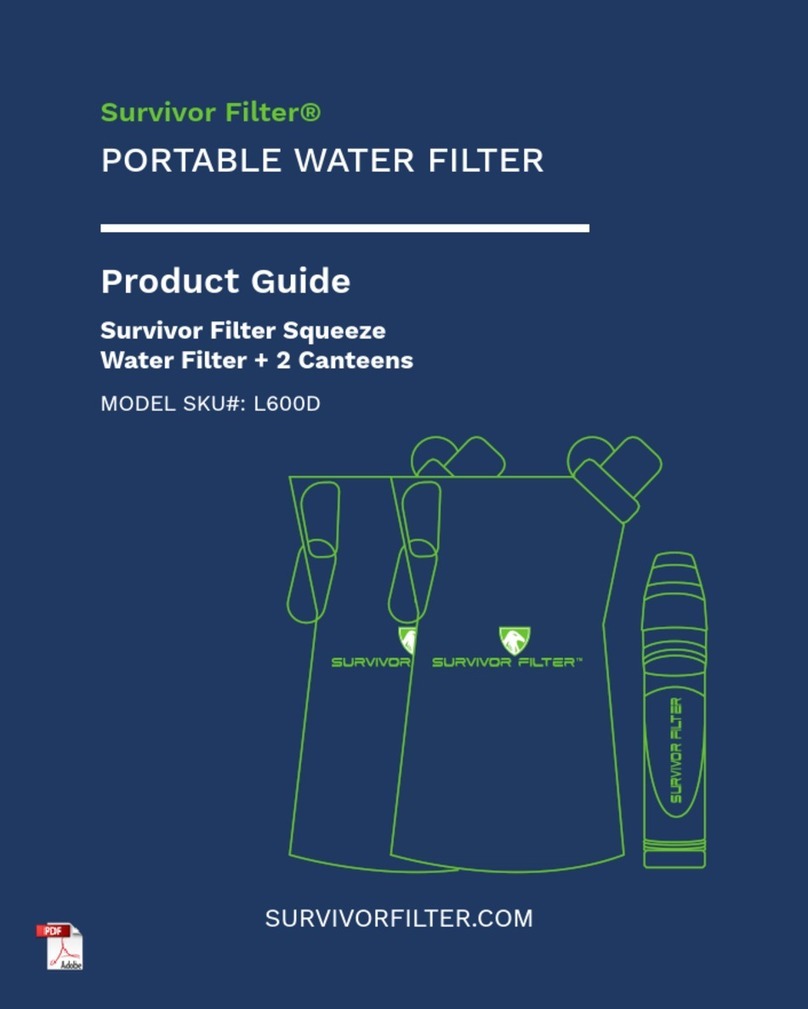
Survivor Filter
Survivor Filter L600D Product guide
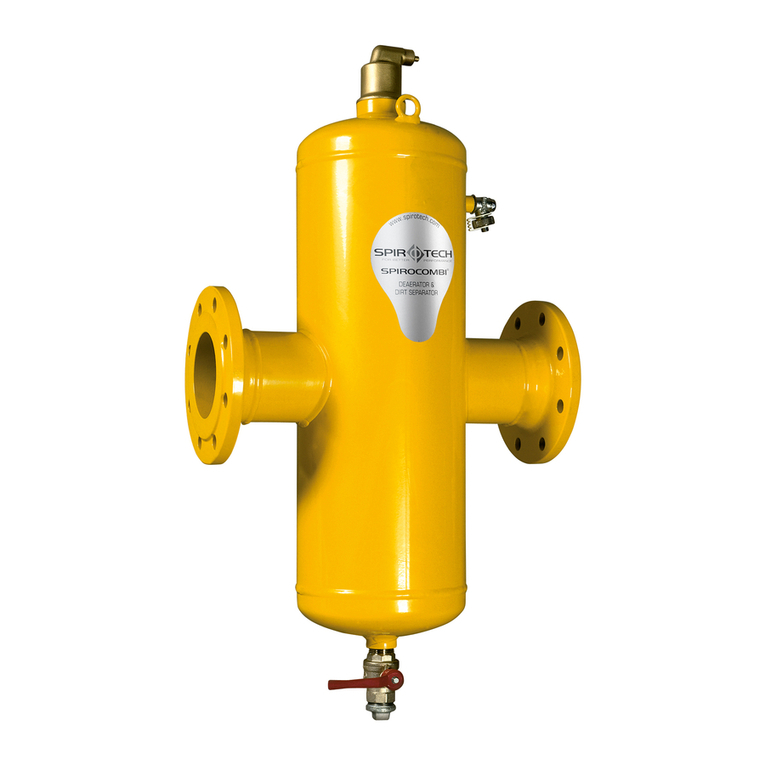
Spirotech
Spirotech SPIROVENT Installing and operating instructions
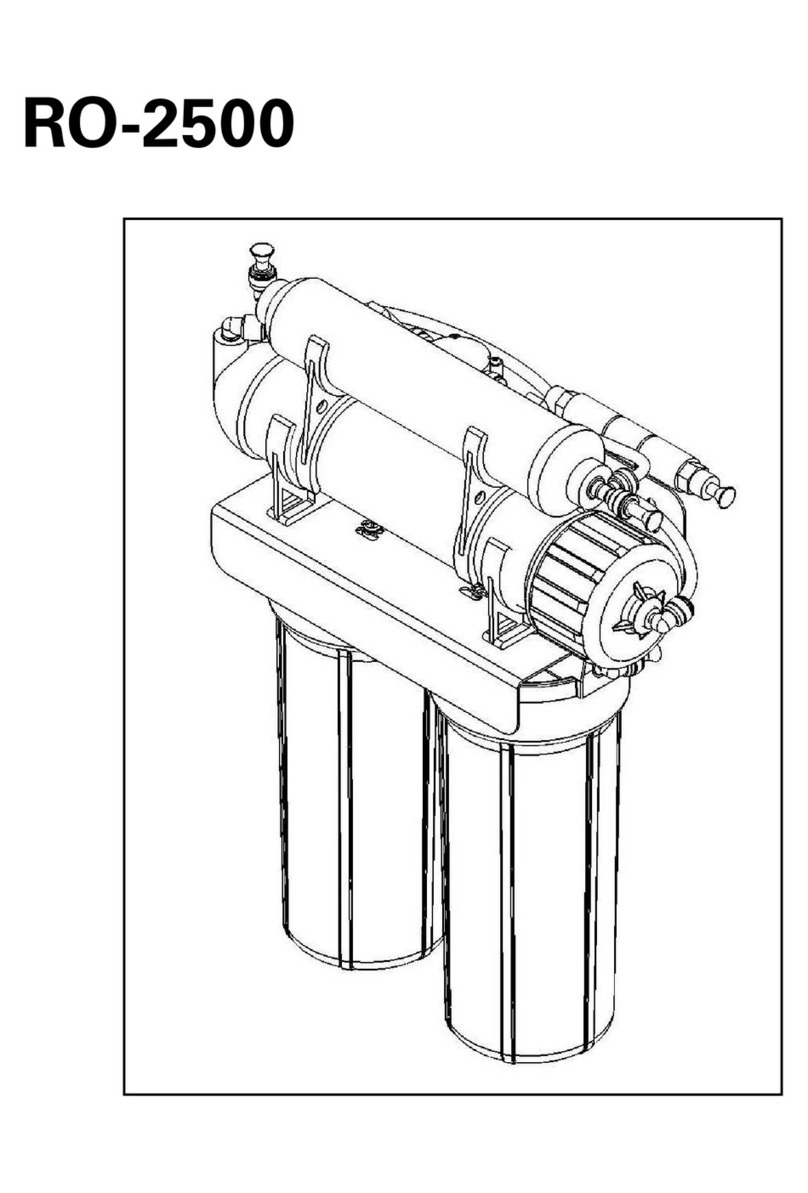
Pentek
Pentek RO-2500 Installation and operating instructions

Mitsubishi
Mitsubishi STERAPORE 5600 FF Series instruction manual
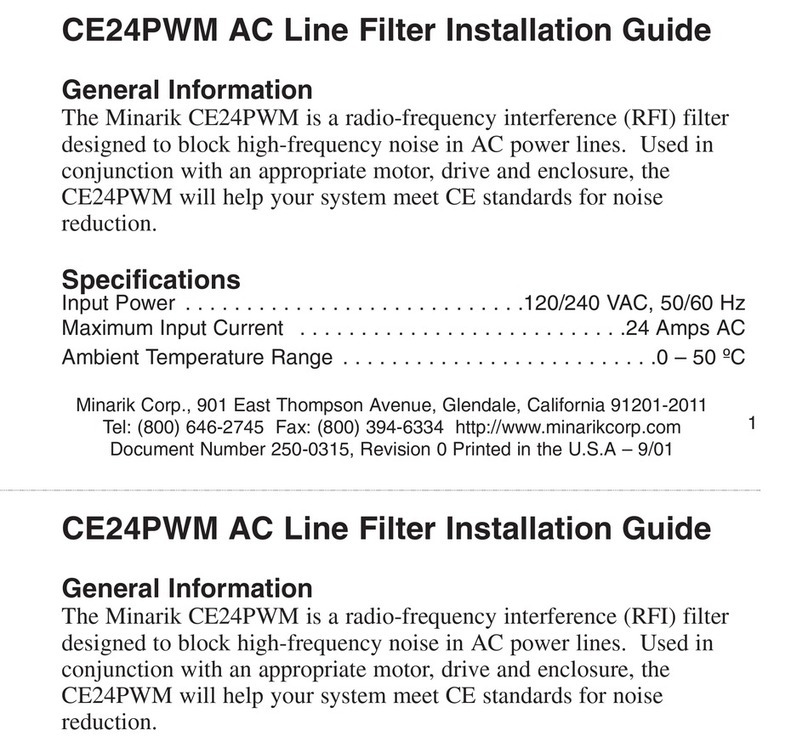
Minarik
Minarik CE24PWM installation guide
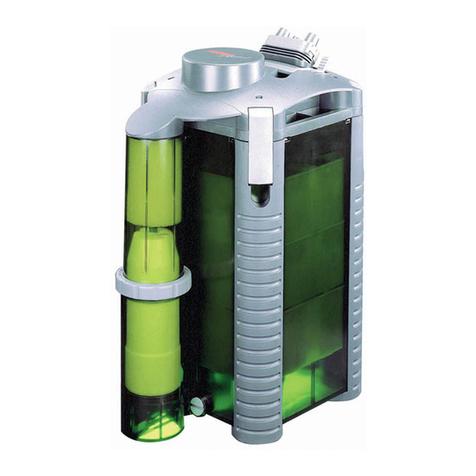
EHEIM
EHEIM 2227 manual
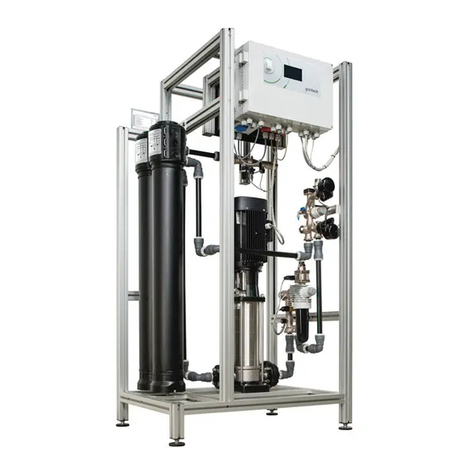
Grunbeck
Grunbeck GENO-OSMO-X 180 Operation manual
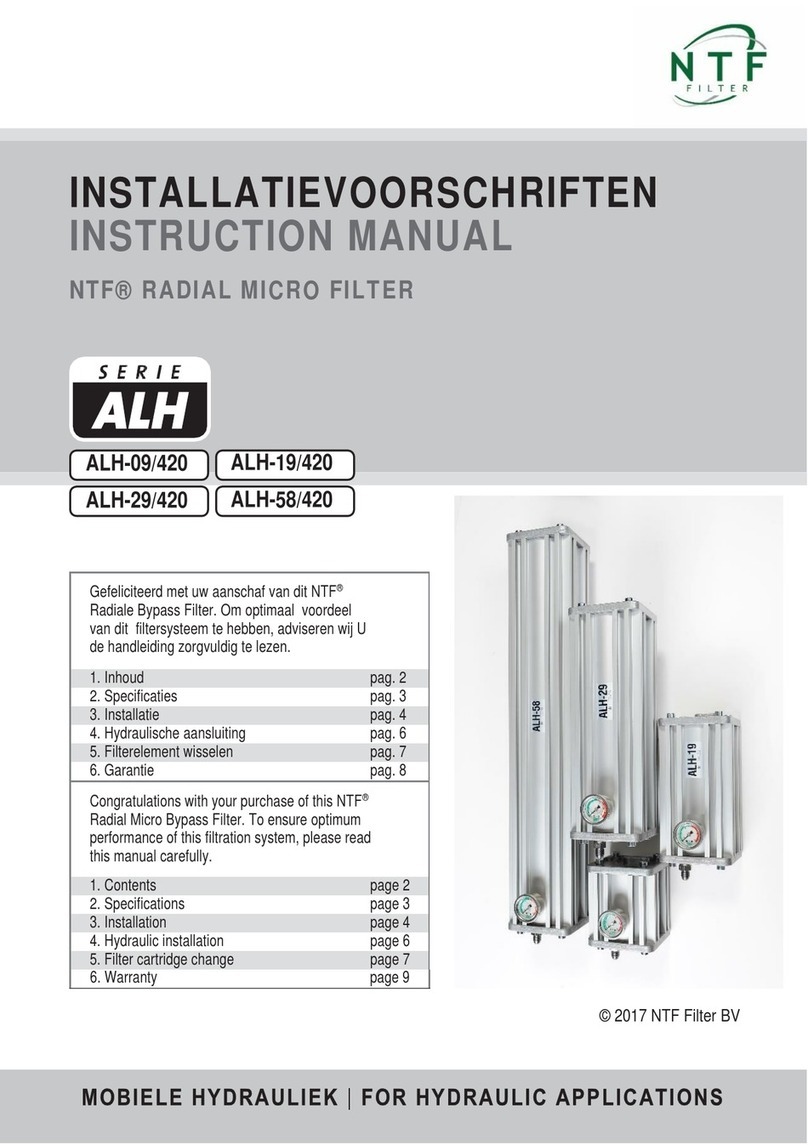
NTF
NTF ALH Series instruction manual

Veolia
Veolia Hydrotech Discfilter HSF 26-2F Series Operation and maintenace manual
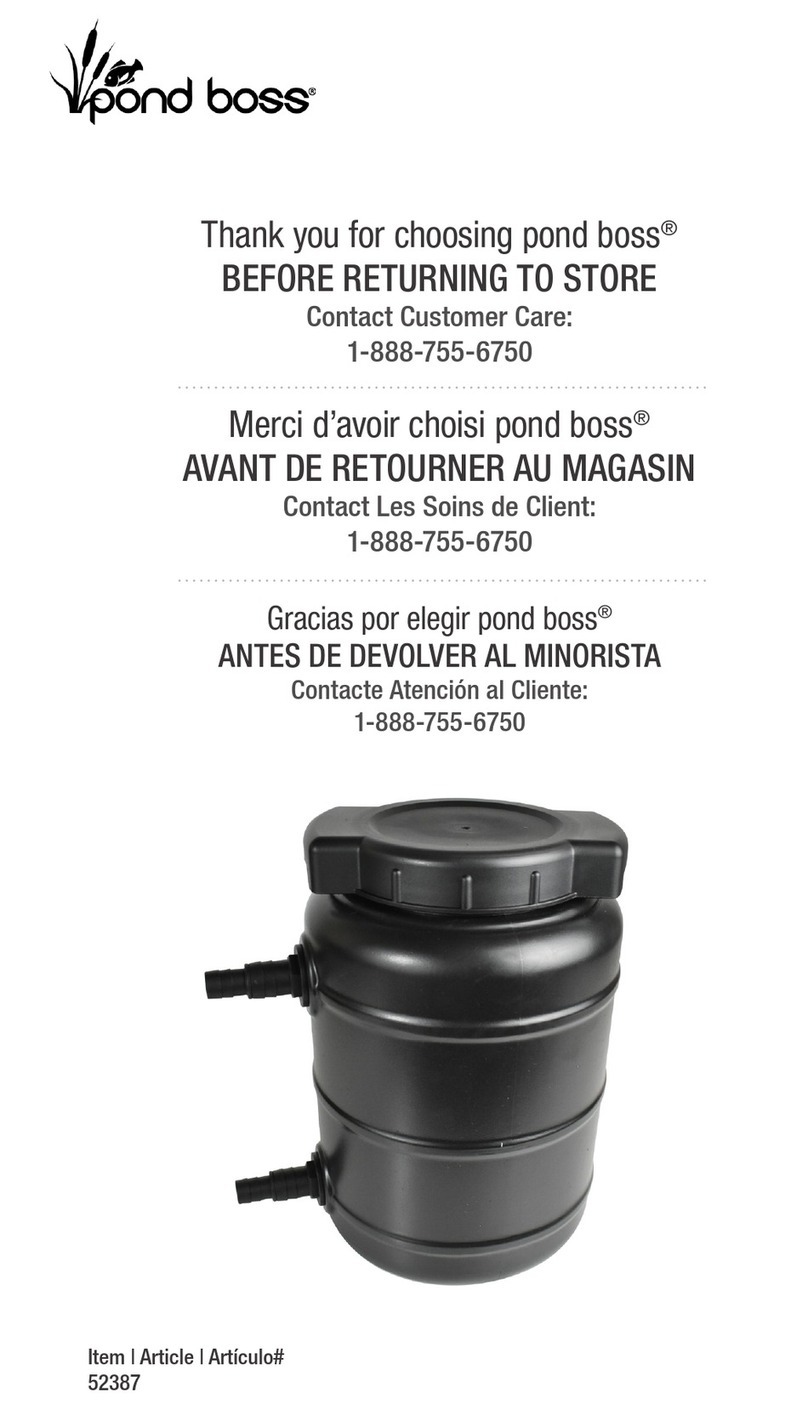
Pond Boss
Pond Boss 52387 manual
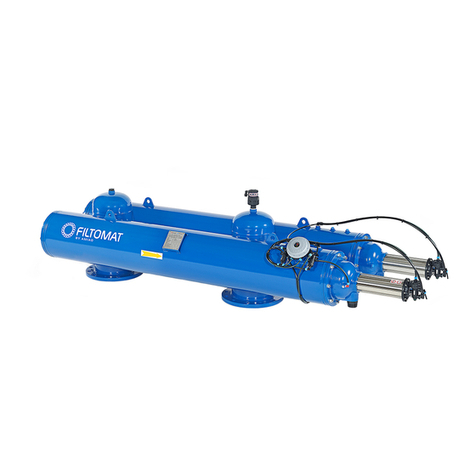
amiad
amiad Filtomat MG110 Installation, operation and maintenance instructions
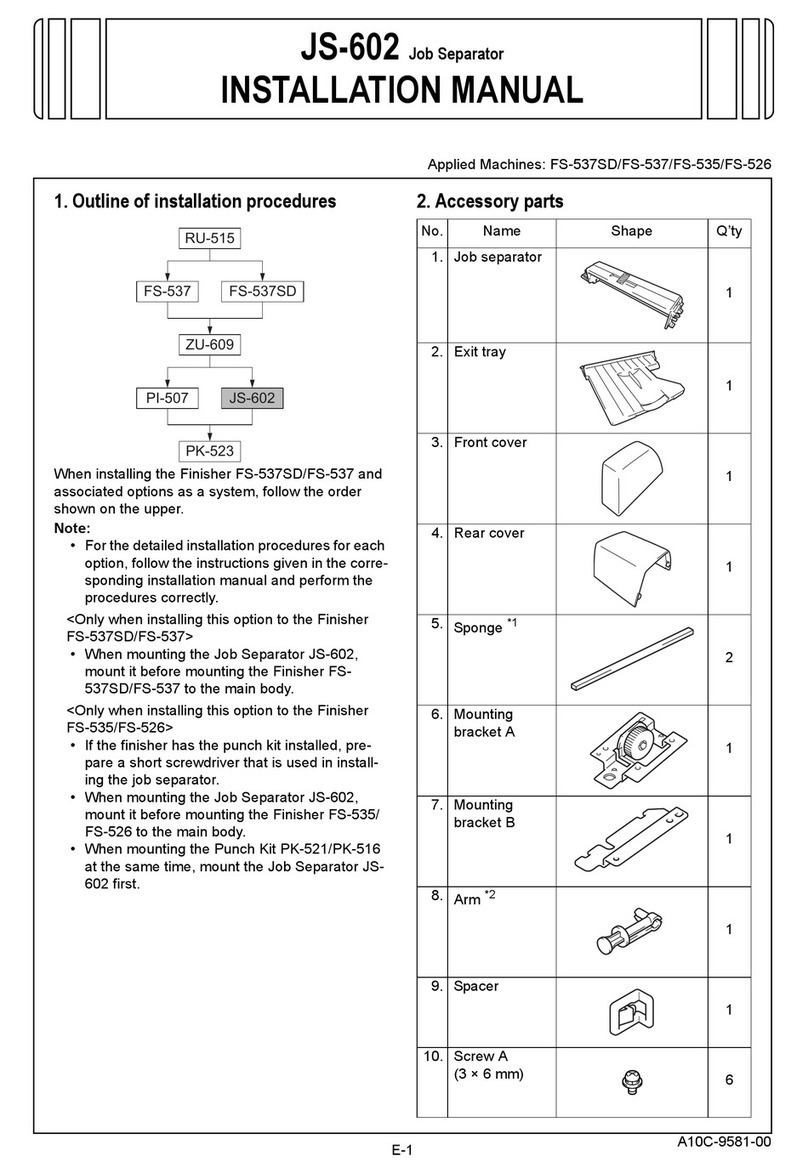
Develop
Develop JS-602 installation manual
